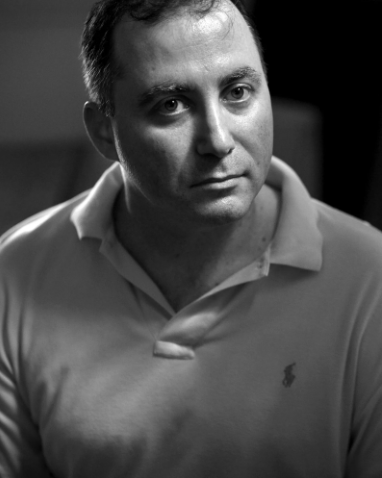According to Hilton Als, an associate professor of writing at Columbia University, writing the “On Television” column in The New Yorker last month, A Moveable Feast can’t entirely be taken at its word. Hilton claimed “The starving-artist myth that Hemingway put forth in his memoir … is one of several that the filmmakers Ken Burns and Lynn Novick debunk in Hemingway, their careful three-part documentary.” This premièred on PBS in the US on my 73rd birthday, April 5, and I very much look forward to seeing it when it reaches Australia. I will be particularly interested to see what it makes of Seán Hemingway’s “restoration”, if it mentions it at all. Als certainly doesn’t refer to the Seán Hemingway rewrite in his article.
When I became aware of what Seán Hemingway - son of Gregory (aka Gloria) Hemingway - had
planned, I devoted part of one of my own weekly columns to it. My gut feeling
back then was that A Moveable Feast would become a tarnished pearl. After
all, would anyone dare change Christopher Hitchens’ Hitch-22 in 2060? Or Joan Didion’s Blue
Nights? I began the column by outlining the reasons my own moveable feast
was ending with a bad taste in my mouth. This is what I wrote back then:
At about that time, I was asked to suggest techniques which might assist former readers, compositors and stonehands, linotype operators and typesetters to make the adjustment to journalism. I could think of no better method for them to learn to write stories in a concise yet descriptive and accurate way than to read Ernest Hemingway’s A Moveable Feast. But, I hastened to add, it should be read in conjunction with The Essential Hemingway, in particular The First 49 Stories, so that the would-be reporter could see the startling results of the skill Hemingway developed and honed in Toronto in 1919 and in Paris in the early 1920s, while he was composing short pieces on conflicts in Europe to send back to the Toronto Star.
This last
part is highly contentious. Seán is claiming Ernest’s fourth and last wife,
Mary Welsh, cobbled together the last chapter after Ernest’s death. Yet there
is no evidence of this, and, indeed, Seán appears to have no proof his rewrite
more truly – to use a well-worn Hemingway word – represents Ernest’s feelings. Massie
pointed out, “This claim [that Mary Hemingway wrote the last chapter] has been
rejected by A. E. Hotchner, Hemingway’s friend, disciple, business and literary
associate in the last dozen years of his life. Hotchner, in an article in The
New York Times, insists that the 1964 book is very much the manuscript
which he himself delivered to Scribner’s in 1960, and that Mary had nothing to
do with editing or, more importantly, reworking the last chapter. Hotchner is
probably right. Nevertheless there is this to be said for Seán Hemingway’s new
version: that in April 1961 Hemingway wrote to Charles Scribner Jr to say that
the Paris book couldn’t be published in its present condition; it was unfair to
Hadley, Pauline and Scott Fitzgerald. But he also added that everything he had
since done to the book had made it worse.”
Massie’s judgment is that “the new version is full of explanations which weaken the impact, and which reek of self-pity. There is self-pity in the 1964 version too, but it is concealed behind a mask of stoicism. It is nastier, but it is also artistically right. It is effective because in this version Hemingway was true to his own artistic credo: that you can leave anything out, so long as you know what it is you are omitting, and the work is stronger for doing so. Massie argues the book should have been left alone. “Seán Hemingway may have done his grandma justice - but it is at his grandfather’s expense,” Massie concluded.
The [now
late] journalist Christopher Hitchens does not agree, and he gave what he calls
the “restored” edition a more glowing review in The Atlantic earlier this year [June 2009]. He did so partly because
some minor gaps in the original had been filled out, especially in relation to
sport and food writing. But Hitchens accepts the theory that Mary Hemingway
“pasted together” the Hadley-Pauline story after Ernest’s death, and generally applauds
the fact it has been rewritten. Hitchens, just as I had done back in the
mid-1980s, recommends reading A Moveable
Feast in conjunction with other Hemingway works. I suppose where Hitchens
and Massie coincide in their opinions of Hemingway, and of A Moveable Feast in particular, is in what Hitchens describes as
Hemingway’s talent (“I won’t say genius,” he writes) “in getting the reader’s
imagination to shoulder the bulk of the work”.
Massie is arguing the new edition lifts some of the burden off the reader’s imagination. If this is so, I will need to revise my standard advice to budding journalists*. The feast of practical guidance provided by Hemingway’s memoirs has, apparently, moved on, to something less nourishing. (*Indeed, any advice I've offered these past 12 years, since this column appeared in print, has been, "make sure you get the original edition".)













1 comment:
I didn't know there were 2 versions. I have the original. I need to read the revision. I did see some of the documentary when it aired here.
Post a Comment